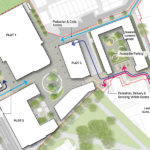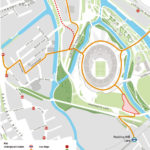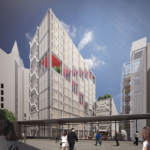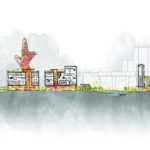We were pleased to attend the Education, Property and Development conference about the future of university campuses – focussing on the themes of ‘collaboration’ and ‘masterplanning’.
Crucially, this included the importance of collaboration between stakeholders when creating a masterplan for a university campus or education centre.
Alistair Burg-Broquere (University of Bedfordshire), presented a very-valuable collaboration with the NHS, where the university and hospital share facilities. Interestingly, the most important points suggested when sharing facilities and locations were:
• recognise different perspectives and use dialogue as much as possible with ALL stakeholders involved, or potentially involved.
• the key in collaboration is to stick to the deadline
• run various and frequent site visits
• expect the unexpected!
Christopher Hinge (University of Westminster) showcased many important points to focus on when thinking about the future of education facilities, universities and campuses. The way students use space on campus has been highlighted by Covid and it was suggested that universities should focus on:
• flexible spaces, instead of “fixed” classrooms
• attractive spaces and facilities
• including commercial space, such as conference centres
• finding suitable tools to measure the success of a space
• sustainability
When building a new masterplan strategy the University of Nottingham, along with consultants, concluded that the following elements are key in defining the identity of a campus:
• parks and open areas are important
• car-dominated layouts should be avoided
• campuses need a strong identity
• campuses needs to feel close to one another (even if the buildings are not all in the same place)
Peter Ward (Kings College London) showed how much the drivers of masterplans have changed. From now on, education masterplans should focus on what is missing, but very-much needed:
• open space
• R&D capacity
• retail
• innovative and flexible space
• connections between campuses
What is abundantly clear at the moment, is that campuses may take a long time to fully recover from the Covid crisis. But this also presents opportunities. Rather than building new education facilities, the focus can instead shift towards the integration and connection of existing facilities.
Now could be the time for universities to discover the value of pedestrian modelling, servicing strategies and how sustainable and innovative mobility might just be able to bring staff and students closer to the campus and its facilities – at a time when we’re becoming used to staying apart.







